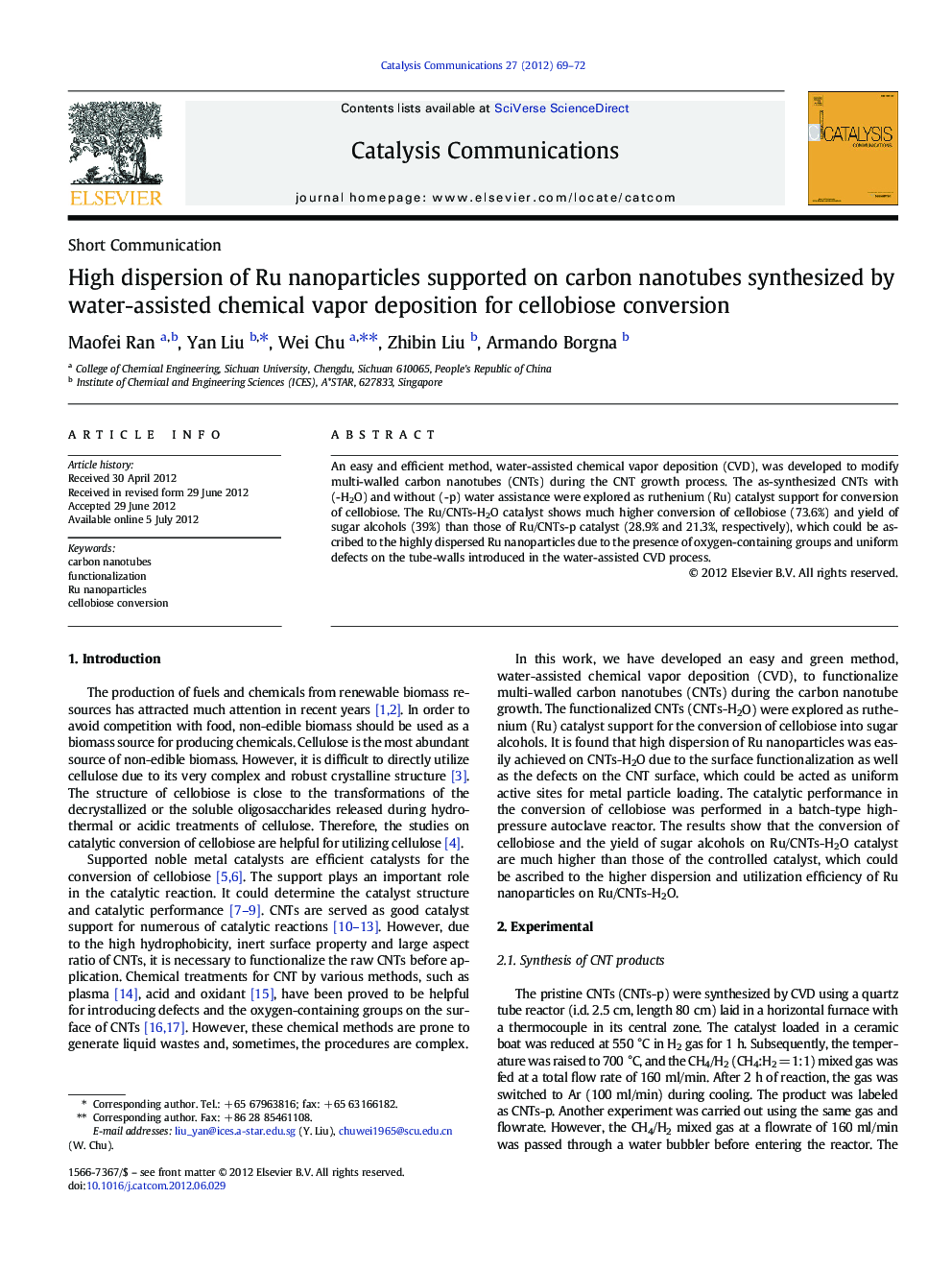| Article ID | Journal | Published Year | Pages | File Type |
|---|---|---|---|---|
| 49971 | Catalysis Communications | 2012 | 4 Pages |
An easy and efficient method, water-assisted chemical vapor deposition (CVD), was developed to modify multi-walled carbon nanotubes (CNTs) during the CNT growth process. The as-synthesized CNTs with (-H2O) and without (-p) water assistance were explored as ruthenium (Ru) catalyst support for conversion of cellobiose. The Ru/CNTs-H2O catalyst shows much higher conversion of cellobiose (73.6%) and yield of sugar alcohols (39%) than those of Ru/CNTs-p catalyst (28.9% and 21.3%, respectively), which could be ascribed to the highly dispersed Ru nanoparticles due to the presence of oxygen-containing groups and uniform defects on the tube-walls introduced in the water-assisted CVD process.
► Functionalized CNTs (CNTs-H2O) were synthesized by water-assisted CVD. ► Defects and functional groups are introduced onto the walls of CNTs-H2O. ► Ru supported on the CNTs-H2O exhibits high dispersion and utilization efficiency. ► The Ru/CNTs-H2O shows higher cellobiose conversion and sugar alcohol yield.
